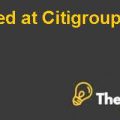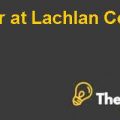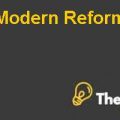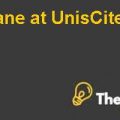Compass Group Financial Management Case Study Solution
This report attempts to perform thefinancial analysis of Compass Group (Ticker: CPG) and compare its performance against the industry benchmarks. We have analyzed different profitability, debt, liquidity and asset utilization ratios of the company and based on the trends of these ratios over the past 5 years Compass Group is financially weak. The comparison of the intrinsic price per share with the current market price by the industry analysts shows that the stock of the company is undervalued in the market. Therefore, based on the overall analysis of the company we have recommended not buying the stock of Compass Group and holding it for long term. Although, the financial statement analysis for the company has been performed through historical ratios, the recommendation seems to match the analyst recommendations and thus investors should not buy the stock of Compass Groupunless the company follows an aggressive acquisition strategy and lowers the level of its debt.
Introduction of the Company
Compass Group provides the widest portfolio of the support and the foodservice solutions around the world. It is a privately limited company and it generates its revenues through the provision of the contracts and the venue catering services. Other services that are provided by the company include the janitorial, food outlets, retail coffee shops, camp management and ancillary services.(IBISWorld, 2016).The company has around 9970 employees working for it and the company operates from Australia with its headquarters in McMahons Point in New South Wales. The company is a wholly owned subsidiary of the UK based company Group plc which is a contract services, property management, cleaning and the support services company.
There are a number of different brands that are supplied by the company and which include the Chartwells, DeltaFM, ESS and many more. Compass Group is ranked at 247 among the 2000 companies that are operating in Australia. The primary source of income for the company is the catering services that it provides within Australia(Company, 2017). In this report, we analyze the external factors and the political competitive environment that impacts on the performance of the company and we also perform a detailed ratio analysis in order to analyze the performance of the company and make certain recommendations to the management of the company.
Ratio Analysis of Compass Group
First we begin with the discussion of the ratios and analysis of the performance of the company over the past five-year period that is from 2012 to 2016. The financial statements for the company have been extracted from Morningstar website.
Profitability Ratios and Trend Analysis
We have computed a range of profitability ratios for Compass Group for the five-year period. First, if we look at the profit margin ratio of the company, then we can see that the profit margin has been not consistent over the last 5 years and the ratio has been lower as compared to the industry average. The profit position of the company is low to medium and the company has been generating low profits over the past 5 years.
After this, if we look at the trend of the gross margin ratio of the company, then we can see that the gross margin has increased and has remained consistent over the past four yearsand in 2016 it is higher than the industry average at 70.27% compared to the industry average of 50.56%. The operating margin ratio of the company show a moderate increase in the operating income of the company and this might be due to lower level of depreciation and other expenses that are incurred by the company. The operating margin for the company is lower at 7.19% in 2016 as compared to the industry average of 8.15%.
The earning per share growth of the company is tremendous and this growth in 2016 is much higher than the industry benchmark. The return on assets ratio for the company also shows a positive trend for the company and it has been increasing. This shows that the company is generating good returns on all of its asset investments. The return on equity ratio also shows a positive trend but it is lower than the industry average. The difference is high and thus we can conclude that the company is generating good profits over the equity that has been invested by the shareholders of the company.
Compass Group Financial Management Harvard Case Solution & Analysis
The DuPont Measure has also been calculated which shows the same ratio equal to ROE. Lastly, the equity multiplier, which measures the financial advantage of the company, shows an average ratio of 3,92 over the last five years. It means that the company is financing a large portion of the company with the equity of the shareholders and this is alarming for the management, shareholders and all the other stakeholders of the company.
This is not a good sign about the mix of debt and equity proportions of the company and as the level of debt for the company is high therefore, we can state that Compass Group is financial not very strong and it is generating just adequate profits for sustainable future operations of the business model...................
This is just a sample partial work. Please place the order on the website to get your own originally done case solution.













